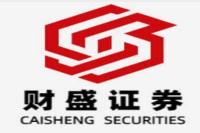China's 2025 Economic Blueprint: A Deep Dive into the Central Committee's Policy Shift and Market Reactions
Meta Description: Analyzing the impact of the CCP Central Committee's December 9th, 2024 meeting on China's 2025 economic plan, including its implications for A-shares, the Hang Seng Index, and key sectors like robotics and CRO.
Whoa, hold onto your hats! The Chinese economy just got a massive shot in the arm. The recent announcement from the CCP Central Committee's meeting on December 9th, 2024, outlining the economic roadmap for 2025, sent shockwaves through the financial markets. Forget subtle adjustments; this was a full-blown policy shift, a game-changer that’s got everyone talking. The meeting’s pronouncements weren't just words on a page; they were a clear signal of proactive intervention, a commitment to stimulate growth, and a concerted effort to address lingering concerns across various sectors. This wasn't some tepid statement; this was a bold declaration of intent, promising a more active and decisive approach to economic management. The market responded immediately, with a surge in Hong Kong stocks and a palpable sense of optimism among investors. But was it all sunshine and rainbows? Let's delve deeper into the specifics of this historic meeting, dissect the key policy announcements, and explore the multifaceted ripple effects across China's dynamic economic landscape. We'll be examining the impact on A-shares, the Hang Seng Index, and specific sectors that experienced dramatic swings, providing a comprehensive and nuanced perspective based on extensive market analysis and informed speculation. Get ready for a deep dive into the heart of China's economic future!
Key Policy Announcements: A New Era of "Super-Conventional" Stimulus?
The December 9th meeting wasn't just another routine gathering; it was a pivotal moment, marking a significant departure from previous approaches. The meeting's key takeaway? A commitment to implementing an even more proactive macroeconomic policy, focusing on boosting domestic demand. This wasn't just tweaking existing strategies; it was a clear signal of a significantly more ambitious and interventionist approach. The use of the term "super-conventional" (超常规) to describe the planned policy adjustments is particularly noteworthy. It signals a departure from traditional, incremental policy adjustments and points towards a more aggressive, multifaceted approach to economic stimulus.
Here's a breakdown of the key policy announcements:
-
Expanding Domestic Demand: The emphasis on stimulating consumer spending and improving investment efficiency is a clear indication of the government's commitment to bolstering domestic demand. This could involve a range of measures, from tax cuts and subsidies to infrastructure projects and targeted support for specific industries.
-
Stabilizing the Stock and Real Estate Markets: The explicit mention of stabilizing both the stock and real estate markets is a significant development. This suggests direct interventions might be on the horizon, aimed at injecting confidence and addressing concerns within these crucial sectors.
-
More Active Fiscal and Moderately Loose Monetary Policy: The commitment to a more active fiscal policy translates to increased government spending, potentially through expanded budget deficits. The shift towards a moderately loose monetary policy, only the second time since 2008, indicates lower interest rates and potentially increased liquidity in the market. This combination aims to stimulate economic activity and investment.
-
Expanding High-Level Opening Up: The commitment to expanding high-level opening up signifies a continued focus on integrating the Chinese economy more deeply into the global system, encouraging foreign investment and trade.
-
Boosting People's Livelihoods: The emphasis on improving people's livelihoods highlights a focus on social welfare and ensuring a stable and prosperous society. This is a crucial aspect of the government's overall economic strategy.
These policy directives painted a picture of a proactive government ready to tackle challenges head-on, using a potent combination of fiscal and monetary tools, a far cry from the more cautious approach seen in recent years.
A-Shares and the Hang Seng Index: Market Reactions and Sectoral Shifts
The immediate market reaction was dramatic. The Hang Seng Index soared by 2.76%, while the Hang Seng Tech Index surged by a remarkable 4.3%. The futures market also reacted enthusiastically, with the FTSE China A50 Index jumping over 4%. This clearly demonstrated investor confidence in the government's new policy direction. However, the A-share market showed a more nuanced response. While some sectors experienced significant gains, others saw declines. The initial rally was followed by some profit-taking, leading to a mixed bag of results.
Robotics Sector: A Sectoral Surge
The robotics sector experienced a remarkable upswing, with several stocks hitting their daily limit. This surge suggests investors anticipate increased government spending on technological advancement and automation. Companies like Sanfeng Intelligent (三丰智能), Shenhao Technology (申昊科技), Aishida (爱仕达), and others saw significant gains, reflecting the potential for growth in this strategically important sector.
CRO Sector: Riding the Wave of Biosecurity
The Contract Research Organization (CRO) sector also experienced significant gains, fueled by the removal of the biosecurity bill from the US NDAA. Companies like Ruizhi Pharmaceutical (睿智医药), Asia-Pacific Pharmaceutical (亚太药业), and Canaan Technology (迦南科技) saw substantial price increases, highlighting the sector's resilience and growth potential. The news about the NDAA was a major catalyst for this sector's performance.
Real Estate Sector: A Cautious Outlook
Conversely, the real estate sector showed a more cautious performance. The initial optimism was followed by a decline, with some major players experiencing significant drops. This suggests that while the government aims to stabilize the sector, the path to recovery may still be bumpy. It's a sector still facing headwinds even with the government’s stated intentions of stabilizing it.
Frequent Asked Questions (FAQ)
Here are some frequently asked questions about the December 9th meeting and its implications:
Q1: What does "super-conventional" (超常规) mean in this context?
A1: It signifies a departure from traditional, incremental policy adjustments. The government is signaling a commitment to more aggressive, multifaceted measures to stimulate economic growth. Think big, think bold, think outside the box!
Q2: How will the more active fiscal policy be implemented?
A2: This could involve increased government spending on infrastructure projects, tax cuts, subsidies, and targeted support for specific industries. Expect to see a larger budget deficit as a result.
Q3: What are the implications of a moderately loose monetary policy?
A3: Lower interest rates and increased liquidity in the market are likely. This should make borrowing cheaper for businesses and consumers, potentially stimulating investment and consumption.
Q4: Will these policies address the challenges in the real estate sector effectively?
A4: While the government aims to stabilize the real estate market, the path to recovery might be gradual. Significant structural issues remain, and the effectiveness of the policies will depend on their implementation and the broader economic environment.
Q5: What are the potential risks associated with this aggressive policy approach?
A5: Increased inflation and debt levels are potential risks associated with the more expansionary fiscal and monetary policies. Careful monitoring and management will be crucial to mitigate these risks.
Q6: What's the long-term outlook for the Chinese economy based on these announcements?
A6: The announcements indicate a strong commitment to economic growth and stability. However, the success of these policies will depend on various factors, including global economic conditions and the effective implementation of the government's plans. The outlook is positive, but uncertainty remains.
Conclusion: A Pivotal Moment for China's Economic Future
The December 9th meeting marked a pivotal moment in China's economic trajectory. The bold policy announcements signal a significant shift towards a more proactive and interventionist approach. While the immediate market reactions were mixed, the overall tone suggests a renewed commitment to stimulating growth, addressing key challenges, and securing a brighter economic future. The coming months will be crucial in observing the implementation of these policies and assessing their overall impact. It’s going to be a wild ride, folks, but one worth watching closely. Buckle up!



